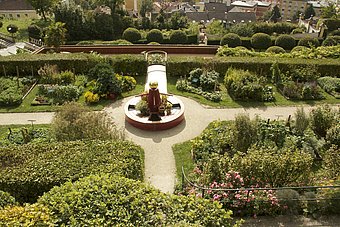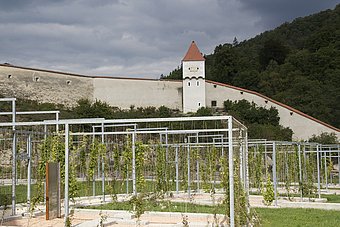Two projects that were implemented in the area of structural refurbishment were the refurbishment of the attic rooms of the Gothic Teisenhoferhof in Weissenkirchen, which was converted during the Renaissance period and has now been adapted as a modern exhibition space, and the renovation of the so-called Künstlerbund rooms in Dürnstein Abbey, which allows the abbey to also be used for conferences and professional events in the winter.
In the garden of the former Carthusian abbey in Aggsbach Dorf, reinforced concrete structures were installed on the foundation walls of the former Carthusian cells on the basis of the findings of an archaeological excavation and planted all around with the types of plants that grew there at the time of the Carthusians. Visitors can now move through the cloister from cell to cell and get a sense from the profusion of monks’ cells how life could have been in the Charterhouse, which was secularised by Joseph II in 1782.
At Melk Abbey, parts of the abbey park were redesigned in contemporary form on the basis of historic sources. Walafrid Strabo’s "De cultura hortorum" from the 9th century, the first handed-down text on gardening in Europe, serves as a poetic storyline for the newly created paradise garden. Two further exciting sub-projects were also implemented: the "Jardin meditérranéen", which is located on an axis with the Coloman altar in the abbey church, and the "Cabinet clarivoyée", which forms the end to the Donauallee. The concepts for both garden projects come from Alfred Benesch, a landscape architect from Melk.
Another garden project created by the Wachau graphic designer and photographer Klaus Pichler in 2012 deals with the lush flowering fruit orchards. Crop plants of the region are presented in the form of an installation in the Wachau flower garden at Spitz Castle. The Hieronymus press also stands in the entrance area and can now be viewed together with the garden.



